Tenkasi
How to Reach
Air
97.3 KMS from Vagaikulam Airport of Thoothukudi District or 160.3 KMS from Madurai International Air Port
Train
Tenkasi Junction Railway Station
Road
New Bus Stand, Tenkasi
I Square Taxi in Tenkasi
Discover Tenkasi with I Square Taxi
At I Square Taxi, we offer convenient travel solutions. These include One-way Drop Taxi, Drop Taxi, and Round Trip services. This ensures you can explore Tamil Nadu with ease. Our services are perfect for those seeking Outstation Taxi rides. We also cater to individuals needing Intercity Taxi or One-way Taxi rides. Our offerings are suitable for both locals and travelers exploring the region.
A Glimpse of Tenkasi’s History
Tenkasi, now the 33rd district of Tamil Nadu, has a rich history dating back to the early 13th century CE. It was once ruled by Vira Pandiya, as recorded in the 1384 inscriptions found in its temples. These inscriptions mention the donation of houses and villages to Brahmanas for reciting the Vedas and Puranas.
Between 1428 and 1460, Tenkasi and its surrounding areas were governed by Pandya King Parakkirama Pandian. Historical records differ about the exact timeline of his rule. Some records cite 1309. Inscriptions in local temples also reference this period.
During the 16th century, Tenkasi was part of the Madurai region. It saw significant influence under the Nayak dynasty. They gained independence from the Vijayanagar Empire in 1559. The famous temple in Tenkasi once featured a flat tower. Its transformation began in 1967. By 1990, the 180-foot artistic temple tower was completed. It became a significant landmark.
Travel through time and history in Tenkasi with I Square Taxi. We make your journey smooth and memorable. It could be a quick one-way trip. Alternatively, you can take a leisurely round trip to explore the rich cultural heritage of Tamil Nadu.
Tourism with I Square One Way Drop Taxi in Tenkasi
Explore Tenkasi with I Square Taxi
At I Square Taxi, we offer convenient One-way Drop Taxi, Drop Taxi, and Round Trip services. These services make travel across Tamil Nadu easy and comfortable. Our services are designed for those seeking reliable Outstation Taxi, Intercity Taxi, or One-way Taxi options. These options help you explore the beauty and culture of the region.
Discover Tenkasi District
Once part of the Tirunelveli district, Tenkasi became an independent district in 2019, after Government Order No. 427 on November 12, 2019. Tenkasi is situated in the heart of Tamil Nadu. It shares borders with Virudhunagar to the north. It shares borders with Thoothukudi to the east. It shares borders with Tirunelveli to the south. It also shares borders with Kerala to the west. The region is nourished by the Chittar and Anumanadhi rivers. These rivers support thriving agricultural activities. More than 65% of the population is engaged in farming. The district also benefits from water sources like Gundar. It also benefits from Adavinayinar, Karupanadhi, and Ramanadhi dams. Additionally, there are over 800 irrigation tanks.
Tenkasi is a natural paradise, famous for its stunning waterfalls that attract many visitors. The Coutrallam Falls, formed by the Chittar River, is renowned throughout the state for its medicinal properties. It has earned the title of “medical spa.” Other popular falls in the area include Peraruvi, Aindharuvi, and Puli Aruvi, making Tenkasi a must-visit for nature lovers.
The district is also rich in spiritual significance, home to some of the most revered temples in South Tamil Nadu. The Kutraleeshwarar Temple in Tenkasi is part of the sacred Chitra Sabha. It is dedicated to Lord Shiva’s incarnation, Nataraja. It is one of the five important Shiva Sabhas. The area’s spiritual significance has been immortalized in Tamil literature, like the poem “Kutrala Kuravanji” by Thirikooda Rasappa Kavirayar. Other notable spiritual sites include the Kasi Viswanathar Temple, Sankarankoil Temple, Pottalpudur Darga, and Ilangi Kumarar Temple.
With I Square Taxi, you can seamlessly explore the natural beauty, culture, and spiritual heritage of Tenkasi. Let us be your trusted travel partner for a smooth and memorable journey.


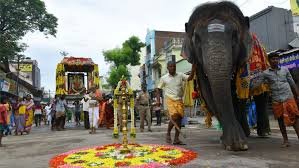


Lord Shiva is the paramount God of Saivism. Lord Vishnu is the Superior God of Vaishnavism. They join in the same idol named Sankaranarayanar. It symbolizes unity of Saivism and Vaishnavism, two major parts of Hindu Religion.
A temple built in the 10th century A.D, it showcases marvelous architecture. Dawn sunlight enters the sanctum of Lord Sankaralinga Swamy on equinox days. This occurs specifically on the 21st, 22nd, and 23rd days of March and September each year.
The ten-day festival in July is known as Adi Tapasu. It commemorates the penance done by Gomathi Amman, the consort of Lord Sankaralinga Swamy. This festival attracts a lot of devotees.
This temple is the chief of Panchabootha Sthalas of South. These are five places, and each stands for one of the five elements. The element typified here is Earth.
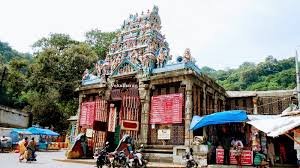

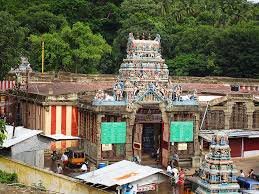


Antiquity of this temple can be traced in Sangam Age Tamil Literature.
It is believed that Sage Agastiyar had converted the idol of Vishnu into a Shivalinga here.
This temple is referred to in Devaram sung by Saint Thirugnana Sambanthar ascribed to the Seventh Century A.D.
Saivite Saints Sundarar and Manickavasakar too sung in praise of this shrine.
Saint Arunagirinathar referred this shrine in his hymns.
Chitra Sabha, one among the five famous dancing halls where Lord Nataraja performs his cosmic dance is located here.
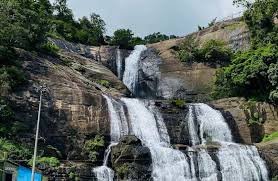



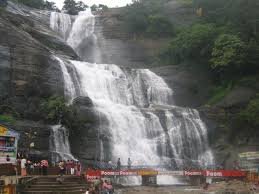
Courtallam is situated at the Western Ghats in Tenkasi District. The famous waterfalls on rocks and tiny droplets are sprinkled in the air. The water falls of Courtallam have medicinal value as they run through forest and herbs before their decent. The Courtallam is called as ‘Spa’ of South India.
There are Seven different falls of Courtallam Details given below:
- Main Falls
- Small Falls (Citharuvi)
- Five Falls (Iyentharuvi)
- Tiger Falls (Puliyaruvi)
- Old Courtallam Falls (Palaiya Courtallam)
- SenbahaDevi Falls (Senbakadavi)
- Honey Falls (Theanaruvi)
Peraruvi (main falls) the biggest falls in Courtallam, is about 60m high. The flow of water is interrupted by the Pongumakadal, a 19m deep crater. It comes down with greatly reduced impact, which makes a bath safe. In Chitraruvi (small falls), the flow is thin. Here naturally separate places for men and women are there to bathe. At Shenbagadevi falls, the water flows through shenbaga (Michaelia champak) trees. There is also a temple there, dedicated to Shenbagadevi Amman. Shenbagadevi leads to Chitraruvi. About 3 km from this is Thenaruvi (honey falls), 40m high and cascading between two large stones. In places where there is no water, one sees big honeycombs. Thenaruvi is very dangerous and it is restricted for public. But it is very common to see people visiting and bathing in Thenaruvi. Aintharuvi (five falls) has five separate cascades of water form this waterfalls. From the orchard above flows Pazhathotta Aruvi, the ‘VIP falls’. Only VIP’s are allowed in Pazhathotta Aruvi.





It is believed that Kaviaramalai, a place ruled by feudal ruler of Sangam Age, Aiy Andiran is this place
Saint Arunagirinadhar praised this shrine in his hymns.
It has become a place of tourism attraction nowadays. It is surrounded by the Western Ghats and has a road approach atop the hillock.
EVENTS & FESTIVALS
Arulmigu Kasiviswanather Temple – Tenkasi
The holy temple was constructed by the great King jadilavarman Arikesari parakarama Pandiaal by 1445 A . D. The Kilng had a dream the and in the dream Lord Shiva. Lord Shiva wished the King would build a temple for him. It was to be constructed on the Dhakshin Kashi on the holy river bank of Chitra Ganga (Chittaru). Surrouonded by ponds. Hills . mountains and pothigai saral – Tenkasi Nagar. The Temple build in 1463 had 9 stories with cultural art and architecture.. Due to the fire accident the temple Rajagopuram was damaged wholly. And the New Rajagopuram with 9 stories was finished by 1990.
Important Cultural Festivals
- Aavani Moolam – Theppa Festival
- Iypasi Thirukalyana Festival
- Maasi Maha Festival
Arulmigu Thiru courtrala Nathasamy Temple
The Current Thirukkutralanathar Temple was designed by the Great King Raja Rajan. The first Prakara wall (Precincts) was built by him. Historians State that the shrine of Lord Perumal was situated left to that of the presiding deity. During the time of the Pandiya kings, the sanctum sanctorum was built. Arthamandapam and Mahamandapa were constructed as well. They also built a separate shrine for Goddess Kuzhalvoimozhi Amman and the Pillayan Kattalai Mandapam. Parasakthi temple was built during the rule of the Nayakka kings. The Compound wall for the Kutralanathar temple, Sanguveethi were also constructed then. New shrines in the inner prakaras were built. Sage Agasthiar was a devotee of Lord Shiva. He likely removed the statue of Lord Perumal. This statue was kept to the left of the shrine of Kutralanathar during the Nayakkar period. Lord Perumal’s shrine is now used as the store house. Chokkampatti kings built Thirikooda Mandapa, Pasupirai, Thatodi, Vaithiyappavilasam and the Corridor for Kuzhalvoimozhi Amman. Stone laying work in the Sanguveethi and Vasantha veethi were also completed. The people of the town did renovation work for Kuzhalvoimozhi Amman temple in 1925
Festivals
Chithrai Vishu Thirunal, Aippasi Vishu Thirunal, Margazhi Thiruvathirai Thirunal and Theppa Thirunal are Special Festivals of the temple.